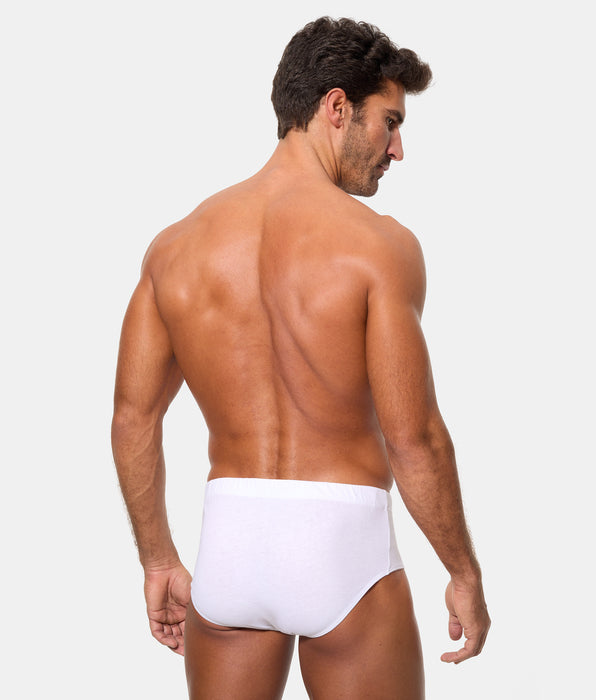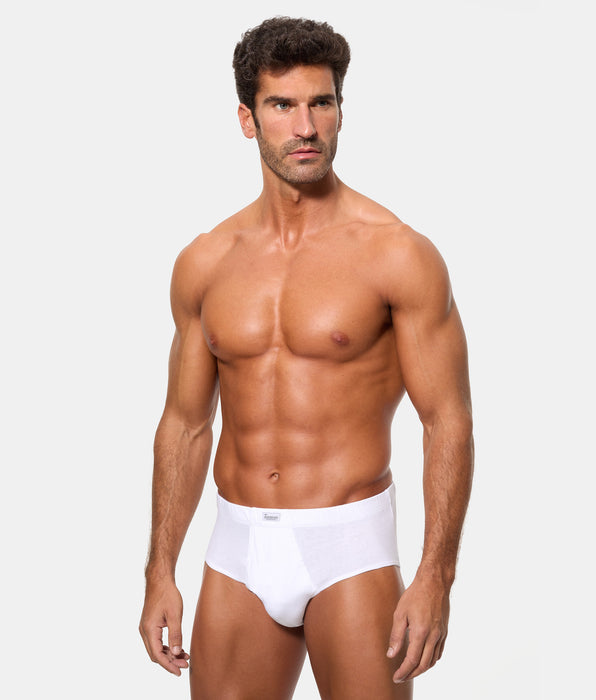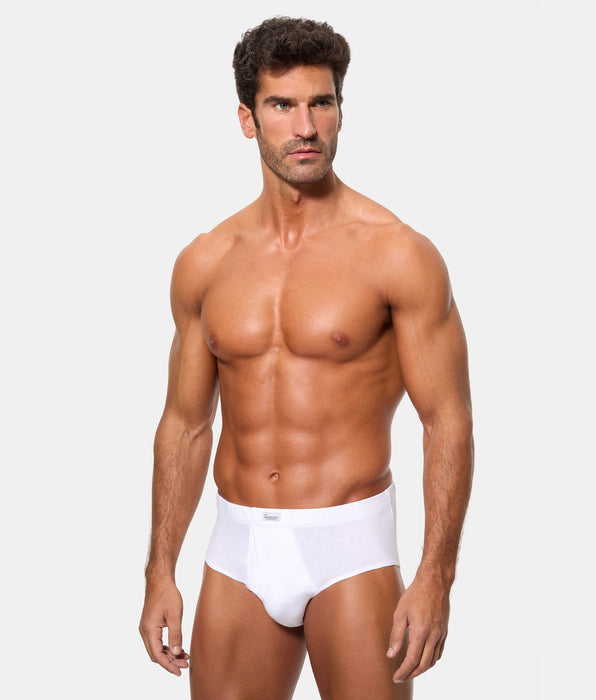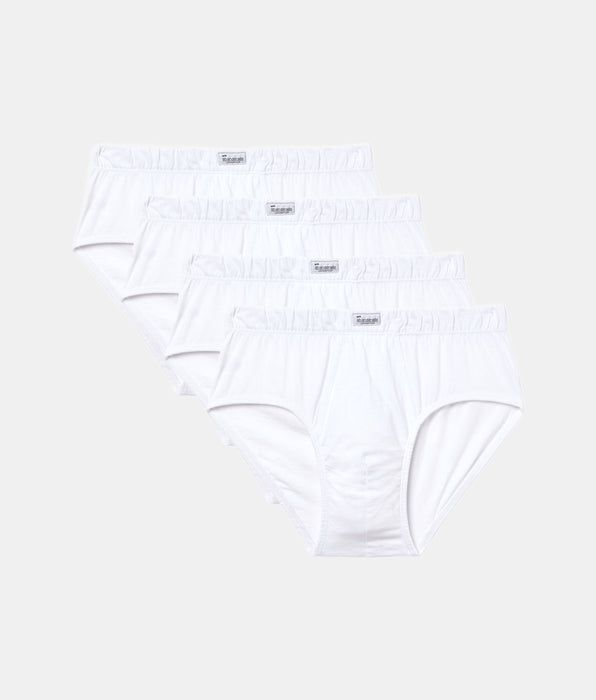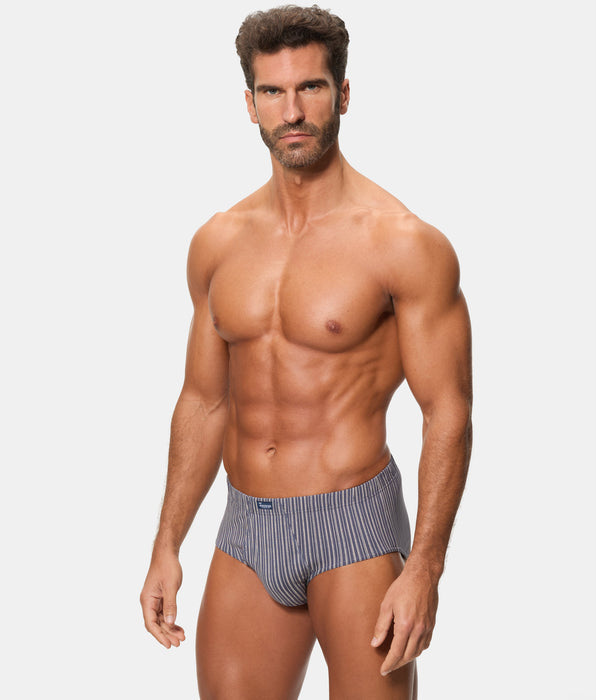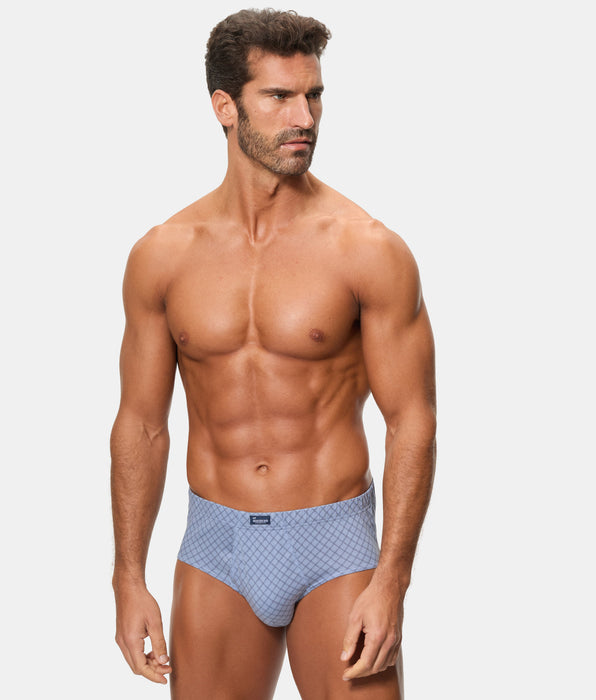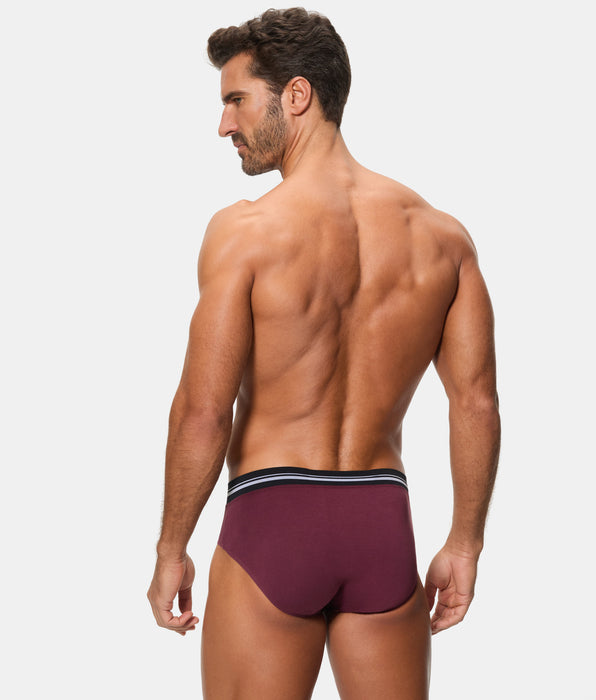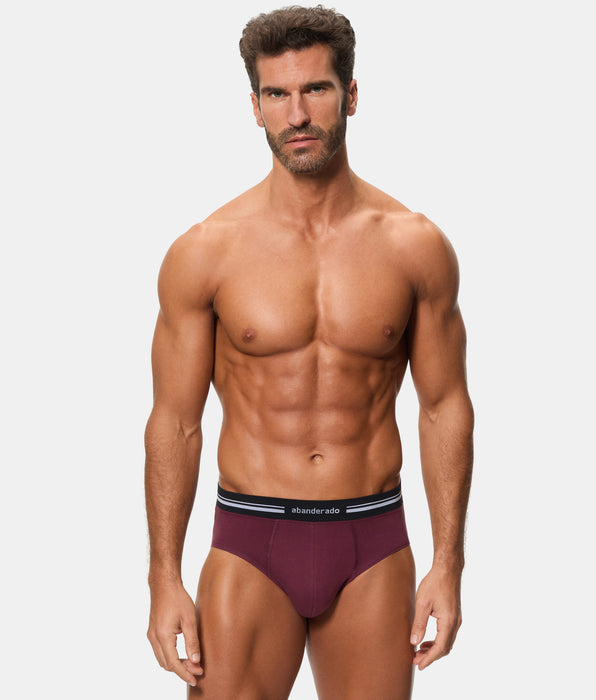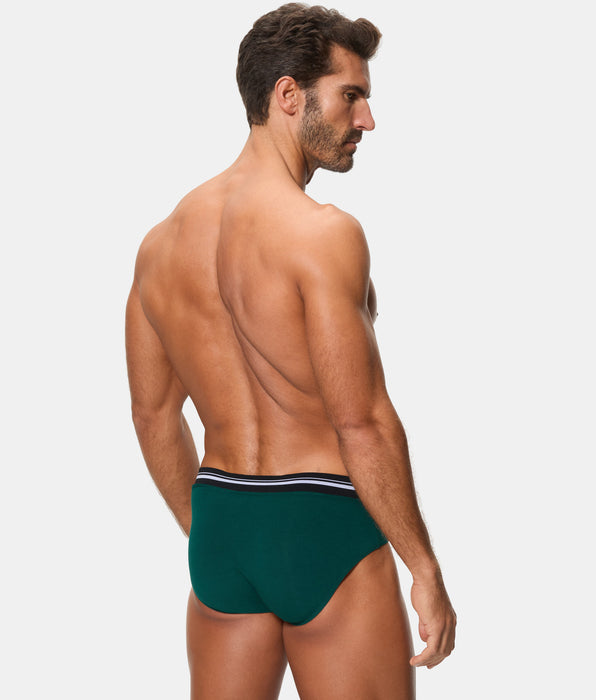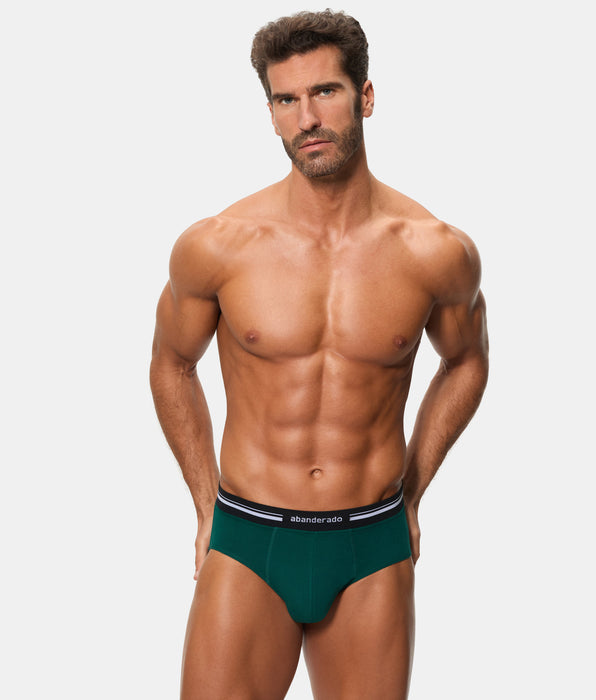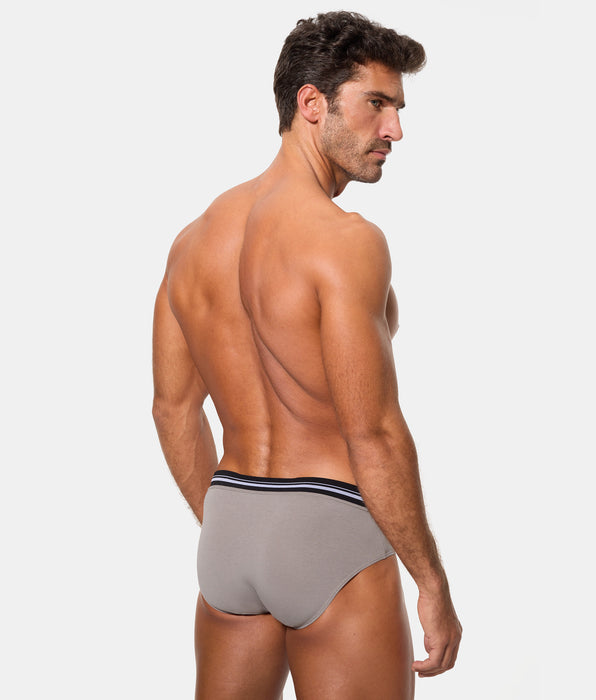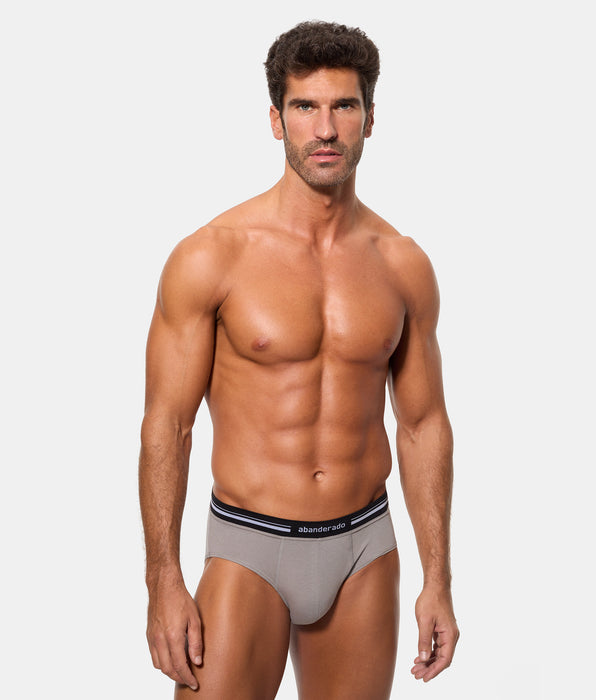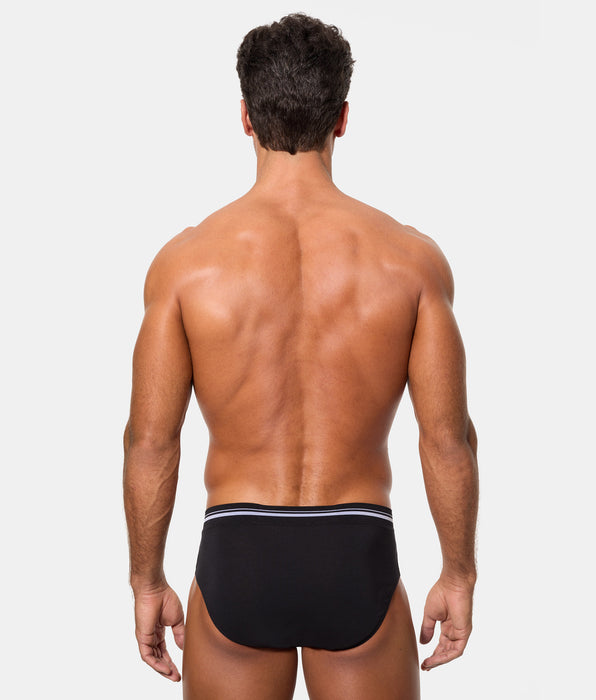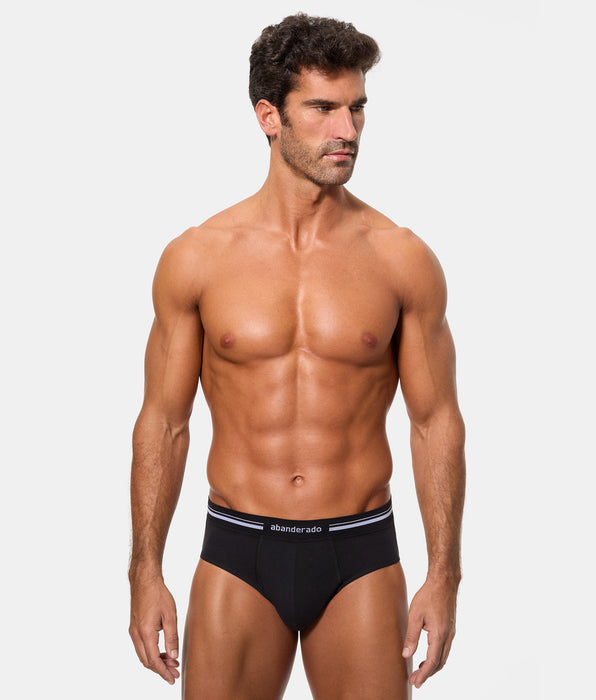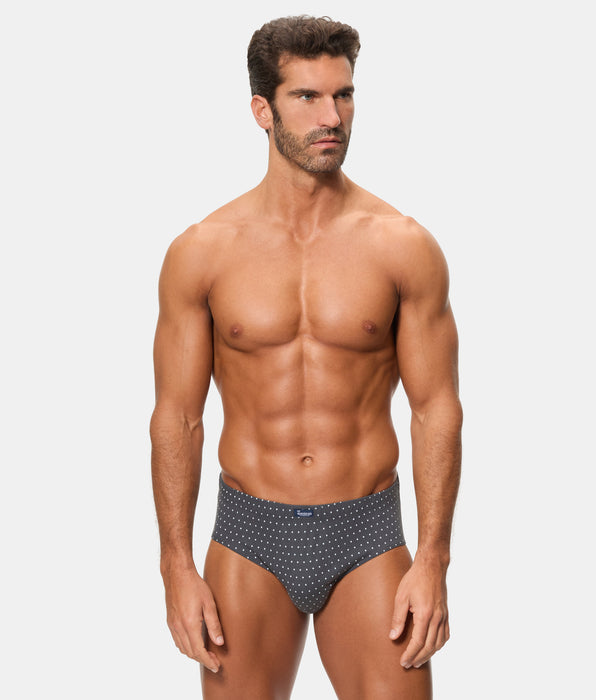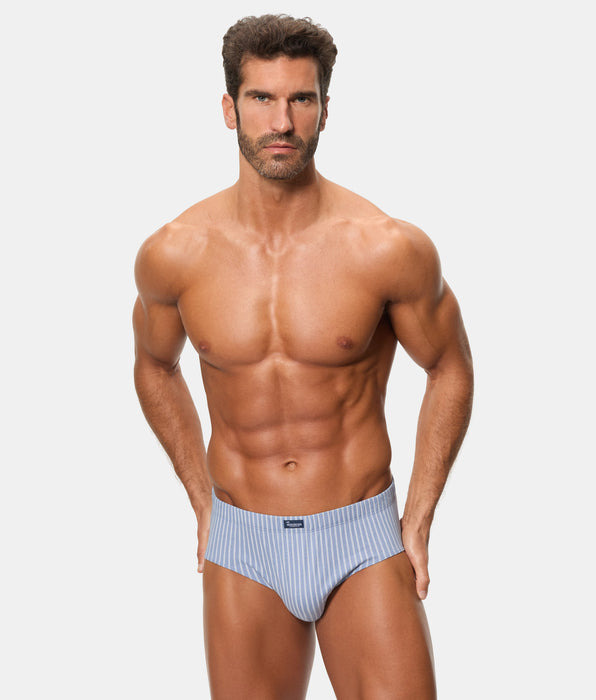The
evolution of men's underwear advertising reflects not only changes in fashion and consumer preferences, but also in cultural attitudes toward the male body. From discreet, functional campaigns to modern ads brimming with sensuality and style, this journey shows how the perception and sale of men's underwear has changed.
In this evolution,
iconic brands such as Abanderado have played a key role in the Spanish market , offering products that combine comfort, quality, and timeless designs.
1920s-1950s: Functionality and modesty in underwear advertising
In the early 20th century, men's underwear advertising focused on functionality and comfort.
Ads from this era featured simple designs and a focus on product durability . The images were conservative, featuring fully clothed men, and emphasized how the underwear provided everyday comfort and adequate support.
During this time, brands like Hanes and Jockey began
emphasizing the importance of soft materials and durable seams . Advertising was more targeted toward buyers, usually wives, who were the ones who bought underwear for their husbands.
1960s and 1970s: Briefs and the Male Body
The 1960s brought significant changes in fashion and advertising. In 1934, Jockey introduced the first briefs, and by the 1960s, these had gained popularity. During this period,
advertising began to take a more visual and stylized approach , and ads
began to feature younger, more athletic men .
Gradually, men's underwear began to appear more prominently,
highlighting the male body without being too explicit . Advertisements began to associate boxer shorts with masculinity and physical attractiveness, albeit in a rather subtle way.
Founded in 1963, Abanderado began to stand out in this context with a focus on the quality and functionality of its products, paying attention to the style and shape of its underwear. From the beginning, Abanderado established itself as a brand that offered comfortable and durable underwear, made with soft and durable materials, suitable for the modern man,
with a clear motto: Dressing the man from within.
In the 1970s,
Abanderado was the first men's underwear brand to dare to advertise on television in Spain , standing out for its innovative approach that freshly combined the emotional with the rational.

1980s: The explosion of underwear marketing
The 1980s marked a turning point in men's underwear advertising. In 1982, Calvin Klein launched an iconic campaign that revolutionized the way men's underwear was marketed. With models like Mark Wahlberg posing in tight-fitting underwear,
Calvin Klein brought boxer advertising to the center of pop culture .
These campaigns not only featured semi-naked men, but also
promoted positive self-image through the use of underwear . The brand capitalized on the trend toward toned bodies and healthy lifestyles, turning men's underwear into a statement of style and status, something that hadn't been the focus in previous decades.
In this international advertising context,
Abanderado maintained its focus on comfort and quality, but without neglecting the modernization of its products . The brand continued to innovate in the design of its underwear, adapting to contemporary tastes, with a growing range of styles, such as
briefs, which became a standard of comfort in Spain.
1990s: Diversity of styles and bodies
With Calvin Klein's success, other men's underwear brands, such as Tommy Hilfiger and Puma, began to follow suit.
Advertisements now featured a greater variety of underwear styles , such as boxers and briefs.
During the 1990s, advertising also
saw a greater diversity of male bodies , although the dominant image remained that of the muscular, athletic man.
Underwear became a more personalized item , with consumers able to choose from a variety of materials, cuts, and colors, and ads reflected this diversity of options.
Abanderado , already one of the leading brands in Spain,
expanded its product offering , introducing new designs and patterns ranging from traditional briefs to more modern boxers. Its advertising began to reflect the diversity of styles available to the modern man.

2000s: Focus on lifestyle and viral campaigns
With the arrival of the 2000s and the explosion of the internet, men's underwear advertising campaigns began to take a
more modern, digital approach . Brands began focusing on lifestyles, linking underwear to
concepts like confidence, well-being, and physical performance .
Brands like Emporio Armani launched high-profile campaigns, using celebrities like David Beckham and international soccer players to promote their products. Men's underwear campaigns became more viral, with
social media ads, fashion shows, and collaborations with fitness and fashion influencers .
Digital advertising and the rise of social media also opened up new opportunities for Abanderado to connect with consumers more directly.
Advertising campaigns became more interactive, with influencers and brand ambassadors representing the brand's values.
2010s and Beyond: Inclusion and Sustainability
Over the past decade, men's underwear advertising has evolved to become more inclusive and diverse. Brands like Saxx and Mack Weldon have adopted approaches that
prioritize comfort and support for different body types and have begun to showcase a wider variety of body types in their ads.
Furthermore, with growing awareness about sustainability, some brands have begun
promoting underwear made with recycled or eco-friendly materials , highlighting the environmental and social impact of their products. This has added a new layer of value to modern consumers who seek not only comfort and style, but also environmental responsibility.
In the current context, on
Abanderado's 60th anniversary , the brand continues to innovate, offering products that not only stand out for their comfort and quality, but also for their
commitment to the environment .
Thus, the
Ecosmart line features men's underwear made with organic, biologically grown cotton, free of toxic dyes or chemical additives. The
Sensitive line , meanwhile, represents another innovation, with garments made with ultra-soft bamboo fabric.
The evolution of men's underwear advertising has kept pace with social, cultural, and technological changes. What began as a promotion of functional and discreet products has evolved into an industry that embraces inclusion, diversity, and sustainability. Today, men's underwear is not just an essential item of clothing, but a statement of identity, lifestyle, and personal values.




